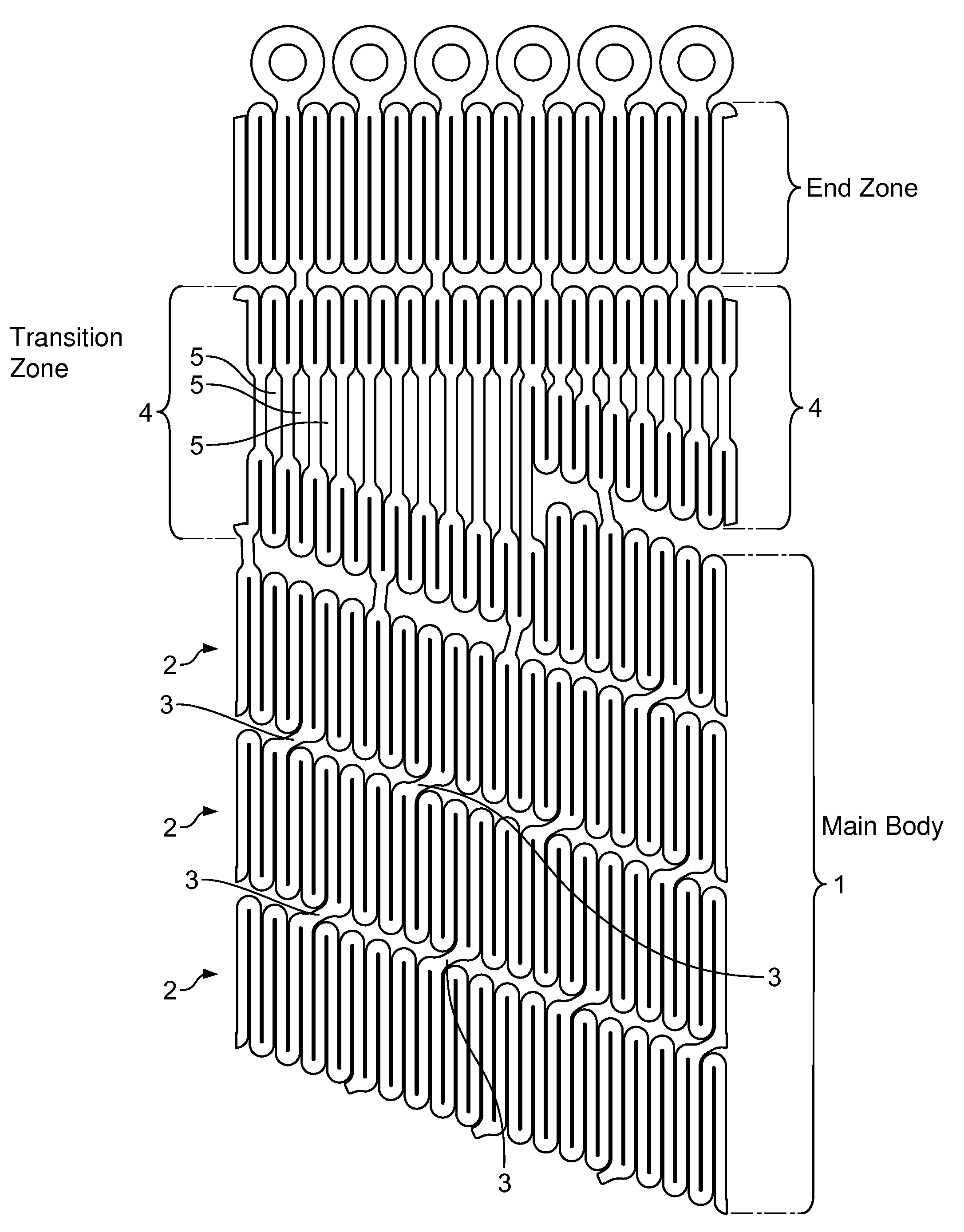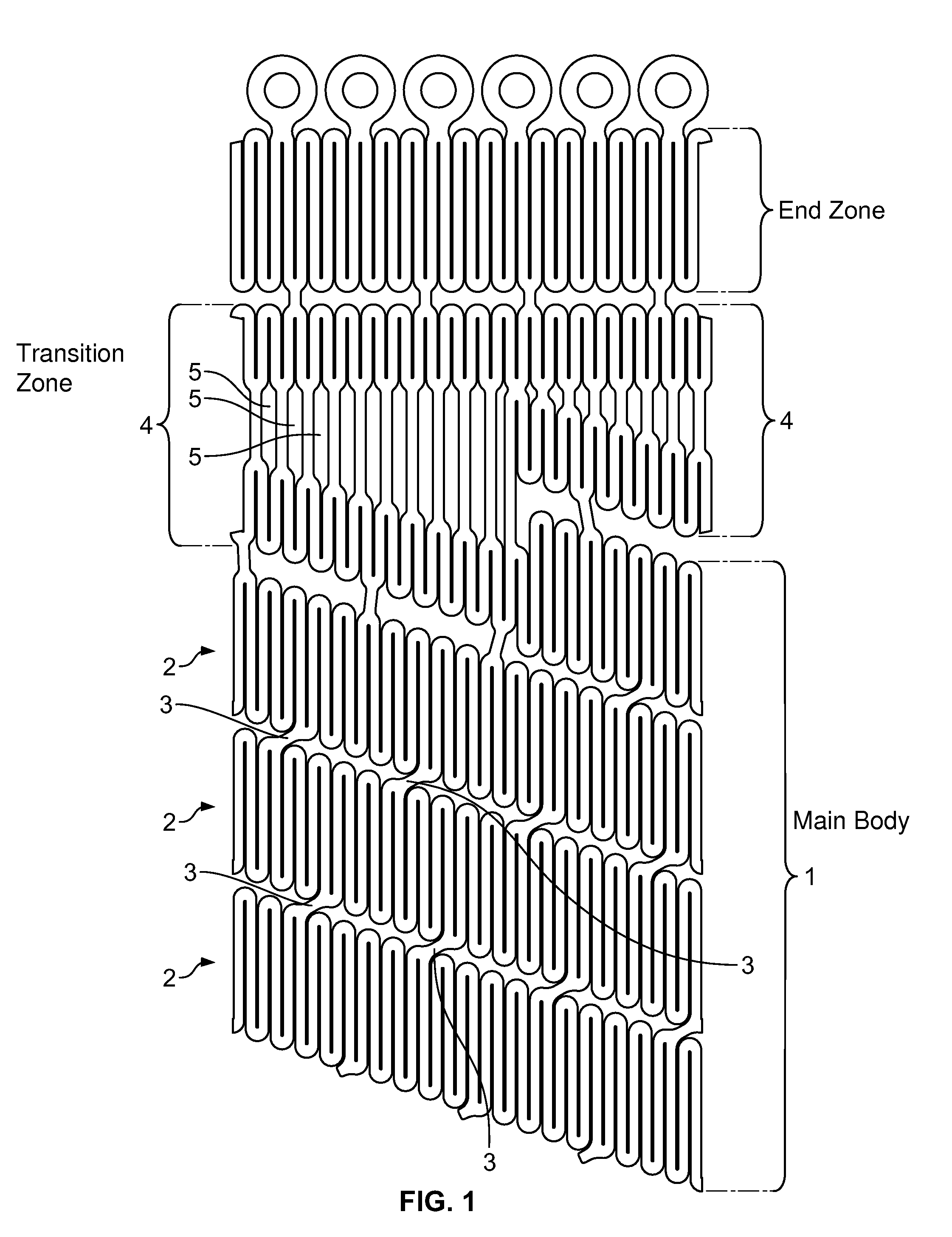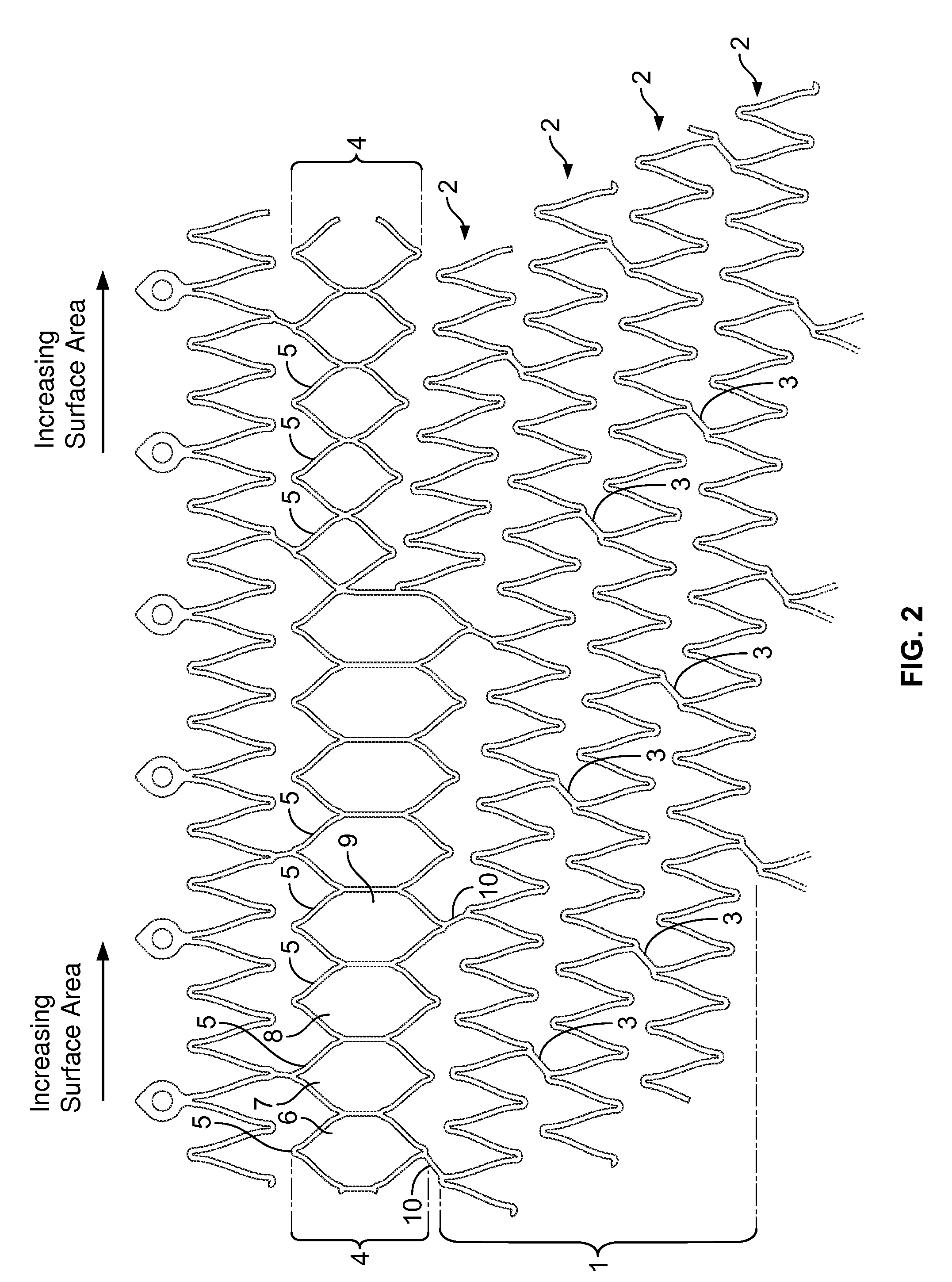Self-Expanding Stent with Polygon Transition Zone
a transition zone and self-expanding technology, which is applied in the field of self-expanding stents with polygon transition zones, can solve the problems of change in stress or bending moment of stents across the transition zone, collapse of balloon expandable stents,
- Summary
- Abstract
- Description
- Claims
- Application Information
AI Technical Summary
Benefits of technology
Problems solved by technology
Method used
Image
Examples
Embodiment Construction
[0052]The self-expanding stent of the present invention provides for a transition zone between the main body of the stent and the end zone, comprising a plurality of n-sided polygons where the surface area of adjacent polygons in the transition zone is unequal. In one embodiment, the surface area of the polygons in the transition zone increases circumferentially across the transition zone around the long axis of the stent in a clockwise or counterclockwise manner. The polygons are formed from two pairs of undulations which are connected by a plurality of segments. The bending moment M of the undulations is equal within each polygon and remains constant across the transition zone, although the specific bending moment M depends on the length, thickness and width of the various segments forming each undulation.
[0053]The stent may be inserted into the lumen of any vessel or body cavity expanding its cross-sectional lumen. The invention may be deployed in any artery, vein, duct or other ...
PUM
 Login to View More
Login to View More Abstract
Description
Claims
Application Information
 Login to View More
Login to View More - R&D
- Intellectual Property
- Life Sciences
- Materials
- Tech Scout
- Unparalleled Data Quality
- Higher Quality Content
- 60% Fewer Hallucinations
Browse by: Latest US Patents, China's latest patents, Technical Efficacy Thesaurus, Application Domain, Technology Topic, Popular Technical Reports.
© 2025 PatSnap. All rights reserved.Legal|Privacy policy|Modern Slavery Act Transparency Statement|Sitemap|About US| Contact US: help@patsnap.com



